Comments / Questions (238)
![]() Ann wrote:
Ann wrote:
Hej Jeg har udfordring med spidsen af huen. De 15 masker der er tilbage på pinden er øreklappernes. Hvordan får jeg 5 masker tilbage når der skal strikkes 2x9 masker på retsiden Hilsen Ann
16.06.2025 - 13:59DROPS Design answered:
Hei Ann. De 15 maskene som er tilbake på pinnen er til spissen (toppen på luen). Øreklaffene er de nederste spissene ved 2. og 6. merke. Når du har 15 masker følger du resten av oppskriften for å strikke toppen / spissen på luen. mvh DROPS Design
23.06.2025 - 09:12
![]() Zofia wrote:
Zofia wrote:
Skoro mam narzucić 135 oczek, to czy oczka brzegowe są już w to wliczone, czy mam dodatkowo narzucić jeszcze dwa oczka?
05.01.2025 - 13:50DROPS Design answered:
Witaj Zofio, tak są wliczone. Nabierasz tyko 135 oczek. Pozdrawiamy!
05.01.2025 - 18:40
![]() Dagmar wrote:
Dagmar wrote:
Ist es richtig, dass man für den Kopfumfang 47-48 cm statt 141 Maschen 142 Maschen aufnehmen muss, denn wenn der 6. Markierer in der 114 Masche ist und dann noch 28 Maschen addiert werden sind es insgesamt 142 Maschen.
08.10.2024 - 11:31DROPS Design answered:
Liebe Dagmar, ja genauso sollen die Markierer eingesetzt werden; es sind 26 Maschen am Ende der Reihe (zwischen 6. und 7. Markierer) und 27 M zwischen 1. und 2. Markierer. Viel Spaß beim Stricken!
08.10.2024 - 16:28
![]() Jesse wrote:
Jesse wrote:
Hi Drops, what is meant by ' if the tension in height is not correct you can work as before with the increase/decrease'? Thank you for the nice pattern
04.09.2024 - 07:40DROPS Design answered:
Dear Jesse, if your tension is not right in height, continue working increases/decreases as before until piece measures the correct height (number of sts is still always the same). Happy knitting!
04.09.2024 - 08:56
![]() N Boelaars wrote:
N Boelaars wrote:
Wat wordt er bedoelt met "De maten zijn aangepast en 2 markeerdraden voor het meerderen/minderen zijn 1 steek verschoven." A) welke 2 (van de 7) markeerdraden worden verschoven? B) welke kant op? naar Links of naar rechts?
16.04.2024 - 15:13DROPS Design answered:
Dag N Boelaars,
De correcties zijn al doorgevoerd in het online patroon, dus als je het patroon uitprint dat nu online staat hoef je daar verder niet om te denken.
17.04.2024 - 21:58
![]() Rikke wrote:
Rikke wrote:
Hei. Det står i oppskriften: Arbeidet måler 6 cm fra oppleggskanten - ... Hvor på arbeidet skal jeg måle? På en av spissene (fellingene) eller der hvor det økes masker? Eller et annet sted?
10.03.2024 - 22:43DROPS Design answered:
Hej Rikke, du skal måle imellem mærkerne - husk at du også finder en video som viser de forskellige momenter :)
13.03.2024 - 15:11
![]() Le Na wrote:
Le Na wrote:
Hallo, wenn es weniger wie die 6 cm sind, wieso ohne Zu- und Abnahmen weiter stricken? Kann ich nicht mit den Zu- und Abnahmen weiter stricken? Sonst werden die drei erhöhten Linien doch unterbrochen? Vielen Dank im voraus für die Antwort.
26.11.2023 - 21:10
![]() Le Na wrote:
Le Na wrote:
Kann ich die Mütze nicht auch rund stricken und mir das zusammen nähen sparen?
23.11.2023 - 20:34DROPS Design answered:
Liebe Le Na, wahrscheinlich, aber dann sollen Sie die Anleitung so anpassen, es kann einfacher sein, die Arbeit in Reihen wie bei der Anleitung zu stricken. Viel Spaß beim stricken!
24.11.2023 - 07:57
![]() Lis wrote:
Lis wrote:
Indtagningerne på Alladin kan sagtens strikkes med de 2 strikkepinde (uden brug af hjælpepind): "Tag den markerede maske + masken før ret løs af (sammen), strik næste retmaske og træk de 2 løst aftagne masker over." Så enkelt kan det gøres, og indtagningerne ligger på samme fine måde som i opskriften. Men hvorfor skal vi dog bruge en hjælpepind og gøre indtagningerne mere besværlige? Mvh Lis.
19.08.2023 - 03:06DROPS Design answered:
Hei Lis Har du en teknikk du syns er enklest og den gir det samme uttrykket, bruk den. Dett fins mange, mange muligheter til å felle, og vi prøver å tilfredstille alle våre brukere og viser forskjellige teknikker. Noen liker denne teknikken, men andre liker den teknikken du beskriver. mvh DROPS Design
21.08.2023 - 11:07
![]() 42n8 wrote:
42n8 wrote:
E' possibile lavorare questo modello con i ferri circolari o a doppia punta?
14.02.2023 - 11:39DROPS Design answered:
Buonasera 42n8, può lavorare il modello in piano anche sui ferri circolari. Buon lavoro!
14.02.2023 - 22:22
Alladin#alladinhat |
|
|
|
|
Knitted hat for baby and children in DROPS Alpaca
DROPS Baby 21-34 |
|
|
INCREASE TIP: All inc are done from RS. Inc 1 st before and after st with marker by making 1 YO. On next round P YO twisted (i.e. work in back loop of YO instead of front) to avoid holes. DECREASE TIP: All dec are done from RS. Dec 1 st on each side of st with marker. Beg 1 st before st with marker. Slip 1 st on a cable needle behind the piece, slip 1 st (= st with marker), K next st and st on cable needle tog, psso. -------------------------------------------------------- HAT: Worked back and forth on needle. Cast on 117-123-129 (135-141) sts (incl 1 edge st in each side) on needle size 2.5 mm with Alpaca. K 8 rows (1st row = RS). Insert 7 markers in piece from RS as follows: 1st marker in the 2nd st on needle, 2nd marker in the 24th-25th-26th (27th-28th) st, 3rd marker in the 48th-50th-52nd (54th-56th) st, 4th marker in the 59th-62nd-65th (68th-71st) st, 5th marker in the 70th-74th-78th (82nd-86th) st, 6th marker in the 94th-99th-104th (109th-114th) st, and the 7th marker in the next to last st on the needle. Continue in stocking st with 1 edge st in garter st in each side of piece - AT THE SAME TIME on 1st row beg to inc and dec - Read INCREASE TIP and DECREASE TIP above - on every other row as follows: Inc 1 st after 1st marker. Dec 1 st on each side of 2nd marker. Inc 1 st on each side of 3rd marker. Dec 1 st on each side of 4th marker. Inc 1 st on each side of 5th marker. Dec 1 st on each side of 6th marker. Inc 1 st before 7th marker. Continue to inc and dec from RS like this on every other row (. i.e., on every row from RS) a total of 6 times. The piece measures approx. 6 cm from cst on edge – if the tension in height is not correct you can work as before with the increase/decrease. Then dec on each side of the 2nd, 4thand 6th marker until 15 sts remain on needle (= 17-18-19 (20-21 times). Piece measures approx. 16-17-17 (18-19)cm from the bottom tip at the 2nd or 6th marker = ear flap. Work next row from RS as follows: K 1, K 2 tog, K 9, K 2 tog, K 1 = 13 sts. Repeat dec in each side on every row (from WS P the 2 sts before and after edge st tog) until 5 sts remain. On the last row from WS work 1 edge st, P 3 sts tog and work 1 edge st. Pull thread through the remaining sts. ASSEMBLY: Sew the hat tog mid back inside 1 edge st. The middle of the 3 whole tips on cast on edge goes down to the forehead at the front. TIES: Cast on 4 sts on needle size 2.5 mm. Work as follows: * K 1, place yarn in front of piece (towards you), slip 1 st as if to P, place yarn behind piece (from you) *, repeat from *-* on more time and on all rows. This results in a round ribbon. Cast off when the tie measures approx. 20-22-24 (26-28) cm. Knit a similar tie. Sew one ribbon at the bottom of each tip on ear flap on each side. |
|
Have you finished this pattern?Tag your pictures with #dropspattern #alladinhat or submit them to the #dropsfan gallery. Do you need help with this pattern?You'll find 17 tutorial videos, a Comments/Questions area and more by visiting the pattern on garnstudio.com. © 1982-2025 DROPS Design A/S. We reserve all rights. This document, including all its sub-sections, has copyrights. Read more about what you can do with our patterns at the bottom of each pattern on our site. |








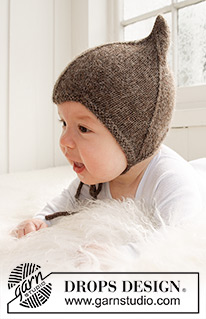
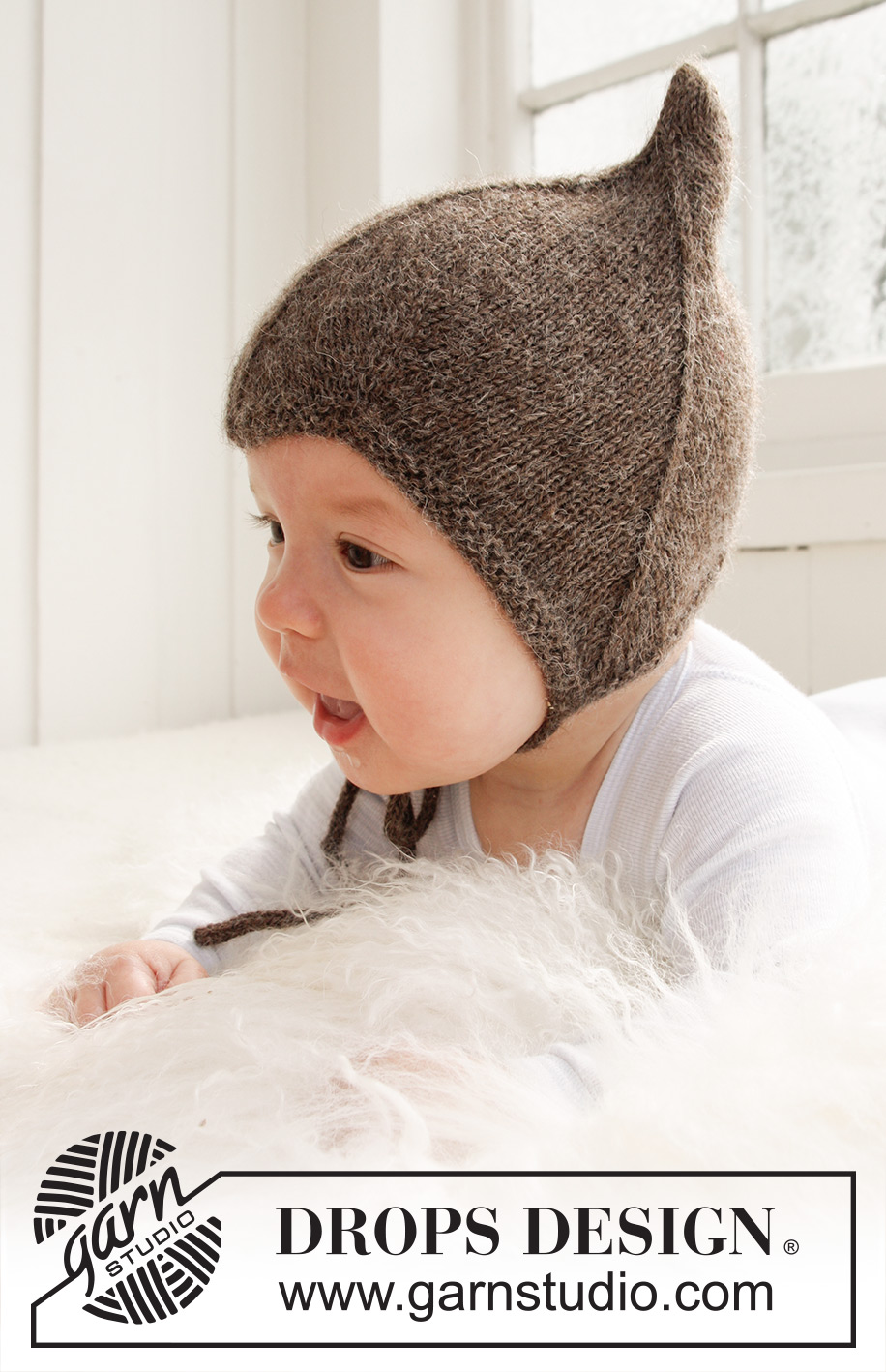




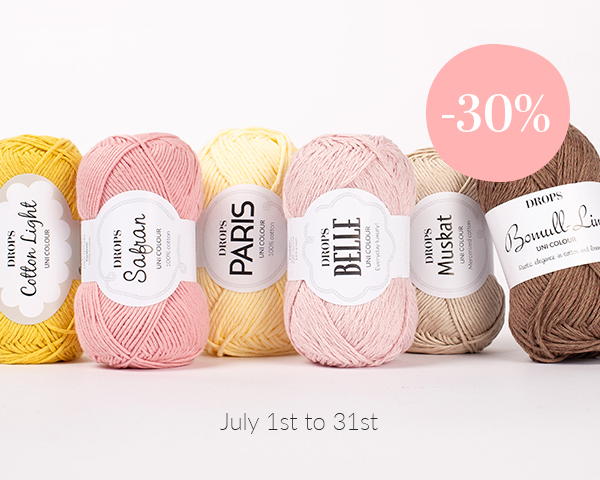





























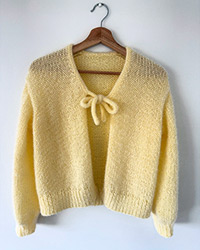
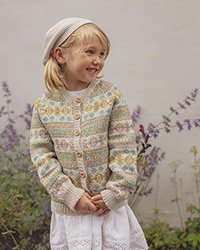
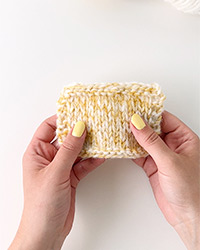
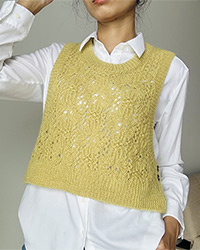

Post a comment to pattern DROPS Baby 21-34
We would love to hear what you have to say about this pattern!
If you want to leave a question, please make sure you select the correct category in the form below, to speed up the answering process. Required fields are marked *.